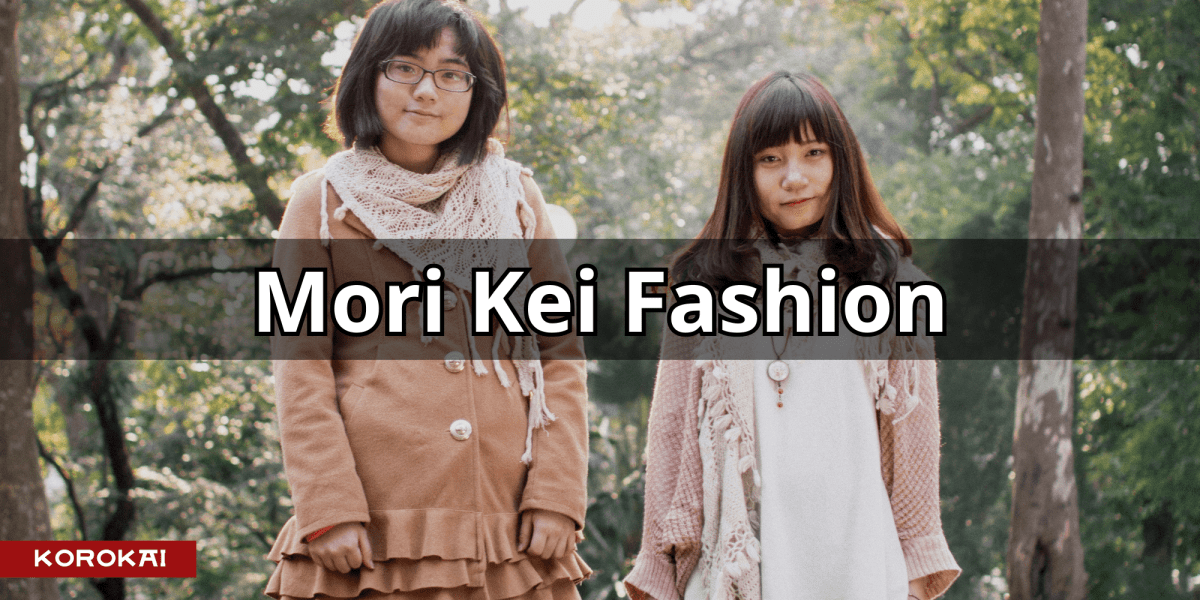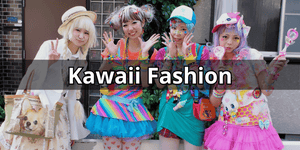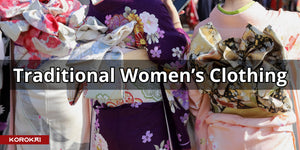Mori Kei is much more than just a Japanese fashion trend: it's a philosophy of life imbued with nostalgia and a deep connection to nature. This style is characterized by soft, layered, forest-inspired outfits, blending rural simplicity with bohemian elegance. Exploring Mori Kei's roots, aesthetic and global reach, we discover a fashion that values authenticity, tranquility and a return to nature. Let's dive into this fascinating and inspiring universe.
Origins Linked to Nature and Simple Things
Mori Kei, often translated as "forest style", is an aesthetic movement that emerged in Japan in the mid-2000s. This trend has its origins in the desire to escape the hustle and bustle of Japanese cities and return to a simpler lifestyle closer to nature. This nostalgia for a more peaceful, less materialistic existence manifested itself in fashion with clothes evoking forests, the countryside and natural elements. It evokes the image of a soothing walk through a dense forest, where every detail, every breath of wind and rustle of leaf has meaning.
The name "Mori Kei" perfectly reflects the essence of this style: "Mori" means forest in Japanese, while "Kei" is a term designating a genre or style. Followers of this trend identify with the image of a forest girl, dressed to blend in with the surrounding nature. Mori Kei outfits evoke an image both nostalgic and romantic, combining rustic simplicity with a touch of softness and femininity. This versatile winter or summer fashion was not just a passing fad, but a genuine lifestyle adopted by many Japanese. It is an ode to peaceful living, far removed from the hustle and bustle and complexity of the modern world.
The Key Elements of The Style

Like many Japanese fashions, this style has its own distinct dress codes. If you too wish to be transported into the world of Mori Kei, where nature and fashion merge, you need to know the basic elements that make up this style. To integrate this sylvan ambience into your wardrobe, here are the central elements to consider:
- Layering: At the heart of Mori Kei is layering. Combining several pieces such as dresses, tunics, and skirts creates a rich silhouette that evokes the coziness of a dense forest.
- Natural fabrics: Raw materials are essential. Opt for fabrics like linen, cotton and wool, for their textures evoking rustic authenticity and their softness against the skin.
- Soft palette: Inspired by forests, a palette of greens, beige, and browns recalls the earth, trees and soothing woods. These natural shades are the foundation of this style.
- Handcrafted accessories: Handmade jewelry, canvas bags and straw hats embody the essence of Mori Kei. They add a dimension of authenticity, reminiscent of the artisans of yesteryear.
- Comfortable footwear: Mori Kei is all about comfort. From cozy moccasins to sturdy ankle boots, shoes are as functional as they are aesthetically pleasing.
Makeup and Hair Mori Kei

Mori Kei make-up is distinguished by its subtlety and ability to accentuate natural beauty rather than radically transform it. The shades used recall those of nature: soft pinks, beiges and browns to evoke the sensation of skin caressed by the sun in a forest glade. Skin is often left luminous, with a touch of rosy lip balm or light blush to bring natural warmth. Eyes are accentuated just enough to make them stand out, but without excess, respecting the essence of the style, which is simplicity and freshness.
As for hairstyles, Mori Kei favors unpretentious styles that evoke freedom and casual charm. Hair can be left loose, wavy or lightly curled to evoke natural waves. Braids, ribbons and discreet accessories like flowers or leaf-shaped barrettes can be incorporated to enrich the look. Like the make-up, the hairstyle aims to complete the Mori Kei ensemble, adding a final touch to this celebration of natural, unadorned beauty.
Mori Kei Sub-Styles to Know
Mori Kei, as a style, is not limited to a single interpretation. Over time, it has seen the emergence of various variations that borrow from its philosophy while adding their own unique touches. Knowing the sub-styles of Japanese fashions is important, as it can help you compose coherent outfits.
- Dark Mori: This variation is distinguished by its dark palette, using mainly blacks, grays and deep greens. It evokes the imagination of a shady forest, with its hidden mysteries and gothic fairy tales. Motifs of ravens, ancient runes and morning mist are common.
- Strega Mori: Combining the magic of the Strega (Italian for witch) style with Mori Kei, this fusion is a celebration of the occult. Mystical symbols, flowing capes and enchanted jewelry predominate.
- Yama Kei: It's the song of the mountains that resonates here. Earthy colors, rugged scarves and trekking-inspired accessories recall high altitudes and vast vistas. A sense of adventure emanates from this variation.
- Shiro Mori: Softness and luminosity define this sub-style. With a palette dominated by whites and pastels, Shiro Mori resembles a snow-covered forest, calm and serene. Delicate accessories like pearls and lace are favored.
- Umi Mori: The essence of the ocean and the beach infuses this style. Blue hues, shell motifs and textures evoking sand and sea offer a maritime interpretation of the Mori aesthetic, recalling wild coastlines and mermaid legends.
A Natural Global Influence
Over the years, Mori Kei has transcended its Japanese origins to become a major stylistic influence around the world. Whether it's for its back-to-nature aspect or its versality as a winter or summer clothes, Mori Kei has already found an audience around the world. In the West, many fashion enthusiasts have been seduced by this aesthetic, which contrasts with the frenetic pace of modern life. Blogs, forums and social networking pages dedicated to Mori Kei have sprung up, enabling an international community to exchange tips, photos and inspiration.
Global fashion has also picked up on some of the key elements of Mori Kei. Designers and brands have introduced into their collections pieces that evoke the simplicity, femininity and connection to nature characteristic of this style. Layered garments, handcrafted accessories and natural motifs have become commonplace on catwalks and streets alike. This global resonance of Mori Kei proves that, whatever the culture, the aspiration to a peaceful existence in harmony with nature is universal.
The Future of This Japanese Fashion
The future of this Japanese casual fashion looks bright as the world becomes more aware of the need to slow down and prioritize well-being and sustainability. As we move towards an era of more conscious consumption, Mori Kei, with its emphasis on simplicity, nature and reuse, is increasingly relevant. Individuals, in search of authenticity and a balanced lifestyle, may be even more attracted to this style that celebrates natural beauty and tranquility. From designers to consumers, many are likely to be inspired by its principles to create and choose clothes that have meaning and long-term value.
At the same time, technology could play a role in spreading Mori Kei. With the rise of social media platforms and fashion influencers, style has the potential to reach an even wider and more diverse audience. Collaborations between traditional brands and Mori Kei designers could also introduce new interpretations and innovations. As the line between tradition and modernity blurs, Mori Kei remains a beacon, guiding towards a future where fashion meets functionality and philosophy.
Conclusion
Mori Kei, with its gentle forest emanations and natural hues, is much more than a simple clothing movement. It reminds us of the importance of simplicity, authenticity and our intimate connection with nature. By embracing this trend, many of us are rediscovering a form of serenity and connection to the Earth. Around the world, Mori Kei continues to seduce and inspire, offering a poetic alternative to the frenzy of modern fashion. It's a gentle reminder that sometimes, beauty lies in the simplest details.












